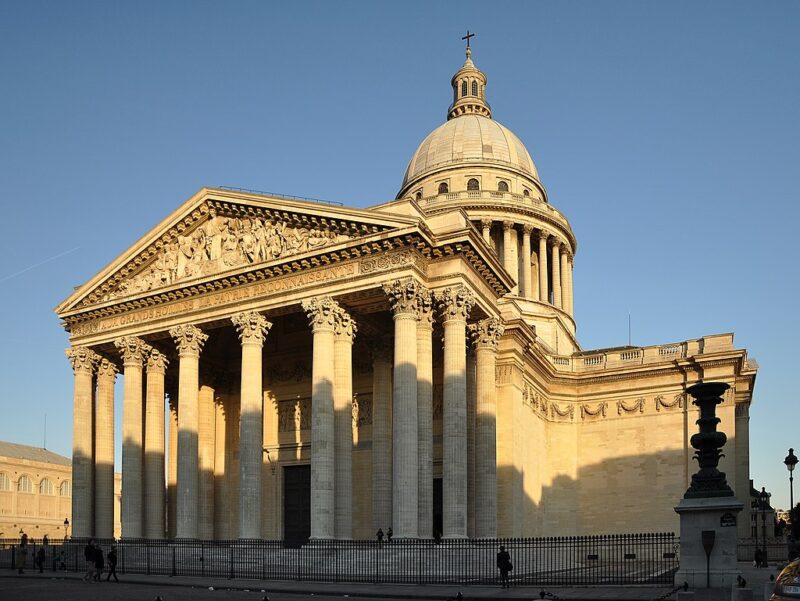7 Reasons You Should Not Miss the Panthéon in Paris
The Panthéon dominates the Montagne Sainte-Geneviève, a hill in the Latin Quarter long tied to Parisian identity. Its massive dome and temple-like façade draw the eye, yet it’s often overlooked by visitors rushing to Notre-Dame or the Eiffel Tower
But what lies inside makes it unforgettable. This is where France keeps its memories, arguments, and legends under one roof. Here are 7 reasons why it deserves a place on any Paris itinerary.
Big thanks to u/choirchic for the permission to use these great photos! 🙏
1. Walk Among France’s Legends
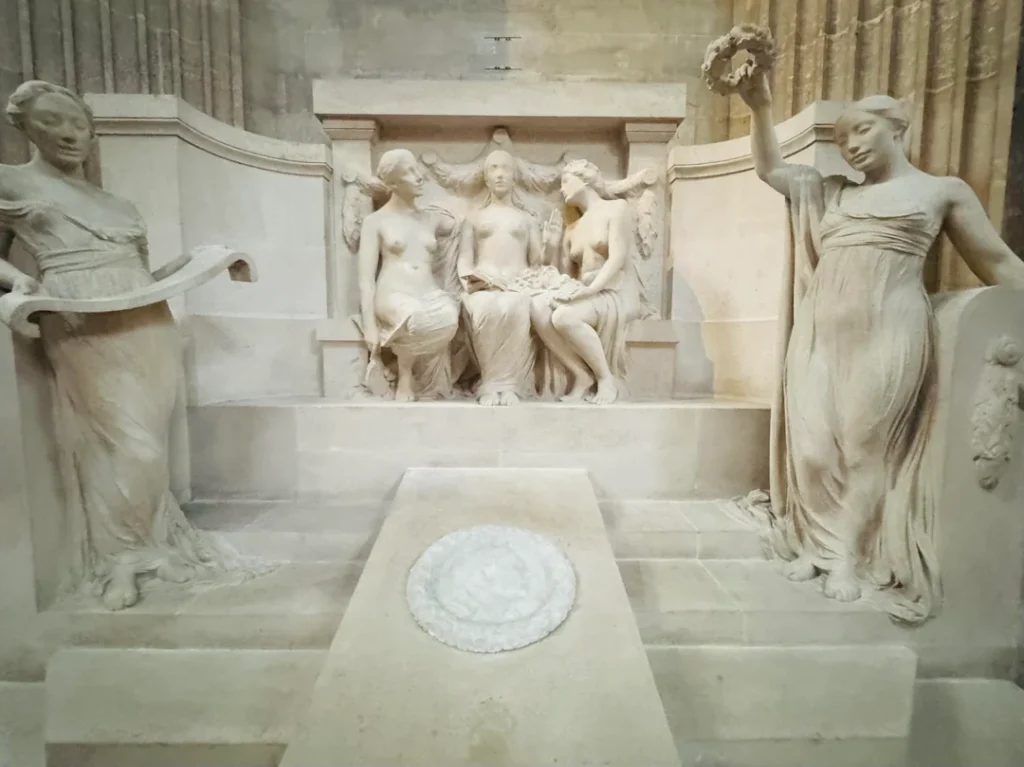
The crypt holds more than seventy figures who shaped the nation. Voltaire was carried here in 1791, his coffin paraded through cheering crowds. Rousseau followed a year later, sealing their rivalry in stone.
Hugo’s funeral procession in 1885 drew two million people to Paris, proof of literature’s power in French life. Zola rests nearby, his coffin later joined by Dreyfus supporters who carried his body to the Panthéon as a statement of justice.
Marie Curie lies in a lead-lined coffin due to radioactivity – her notebooks remain unsafe to handle today!
Simone Veil, who fought for women’s rights and legalized abortion in 1975, lies near the entrance, her tomb regularly covered with handwritten notes of thanks.
2. Born With the Revolution
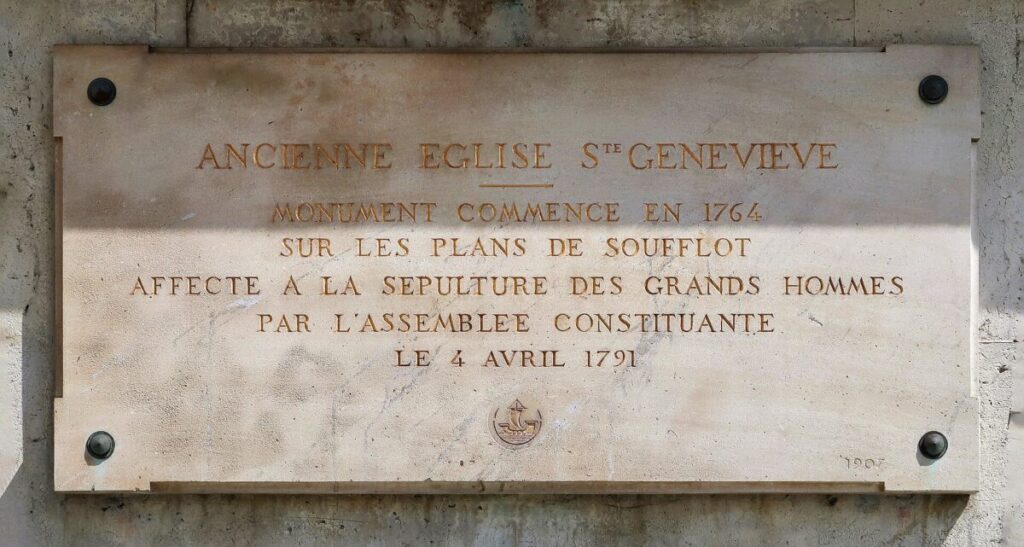
Louis XV commissioned the Panthéon in 1744 after recovering from illness, vowing to honor Sainte-Geneviève.
Architect Jacques-Germain Soufflot designed it as a grand neoclassical church, but by the time it was completed in 1790, the Revolution had begun.
The monarchy collapsed, and the new regime transformed it into a civic temple for national heroes.
Since then it has switched roles repeatedly – church under Napoleon, secular mausoleum under the Republic, back to church during the Second Empire, then secular once again.
Each change left traces you can still see, from the tricolor flag once flown above the dome to plaques in the crypt honoring Resistance fighters reburied here after World War II.
3. The Pendulum That Proved Earth Moves
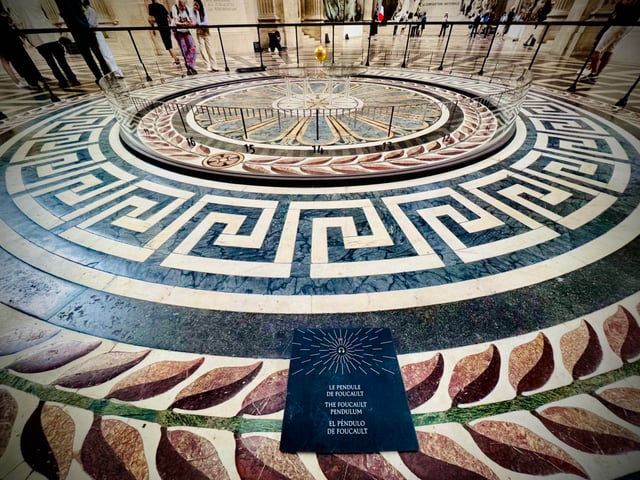
In 1851, Léon Foucault’s pendulum turned the Panthéon into a science laboratory. A 67-meter wire and a heavy bob were enough to show Earth’s rotation as the swing slowly shifted direction.
The experiment was so striking that Napoleon III ordered a permanent installation. Visitors today can still watch the pendulum cut across a circle of bronze markers set in the floor, a quiet spectacle of science in motion.
4. Walls That Tell a Story
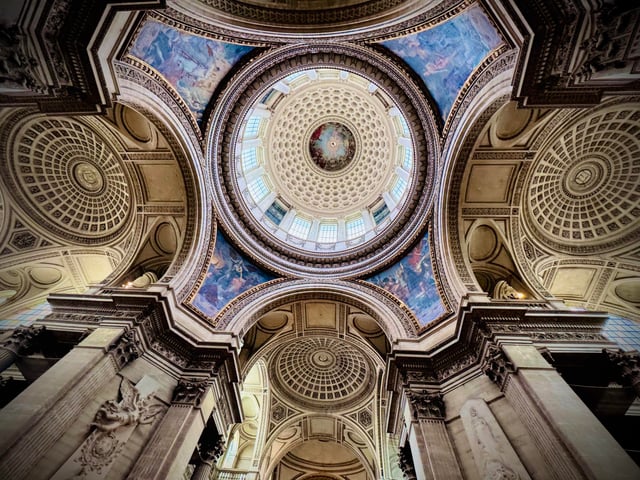
The frescoes inside are a history lesson painted in monumental scale. Puvis de Chavannes filled one wall with the life of Sainte-Geneviève, protector of Paris.
Delacroix once proposed a ceiling but lost the commission; later artists covered the vaults with scenes of Charlemagne and Joan of Arc.
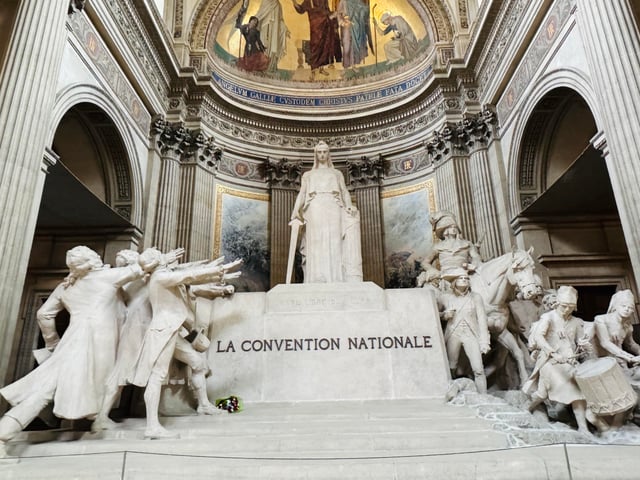
Sculptures line the nave, including the dramatic “Convention Nationale,” showing revolutionaries gathered as if ready to march from stone into history.
The art isn’t neutral, it was propaganda to shape how visitors saw France.
5. The View From the Top
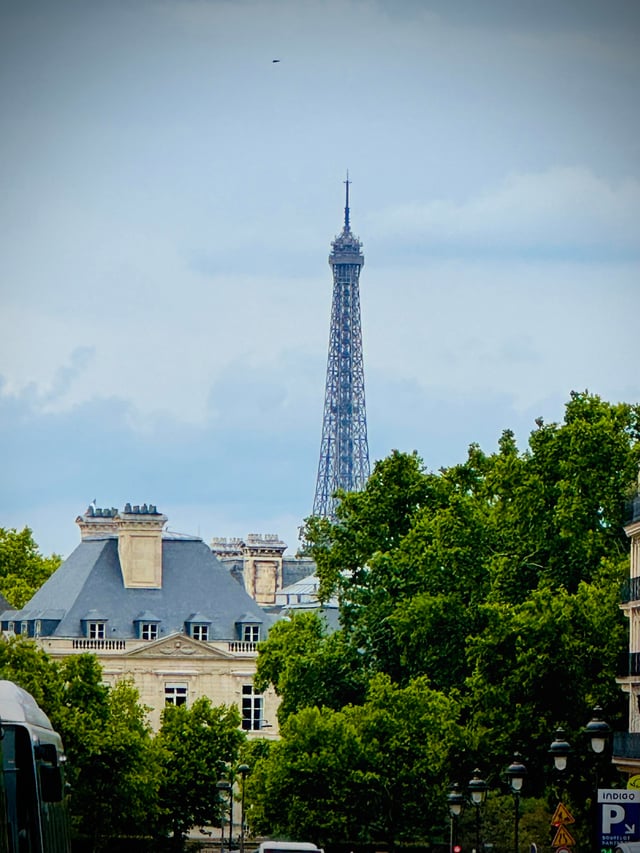
The dome climb is steep with over 200 steps, but worth it. From the gallery you see the Seine cutting across the city, the Eiffel Tower rising in the distance, and the jumble of rooftops around the Sorbonne.
Look down and you’ll spot the grid of the Rue Soufflot leading directly to the Jardin du Luxembourg.
Few Paris viewpoints connect so clearly with the city’s layout. It’s a lesson in how Paris breathes.
6. The Heart of the Latin Quarter
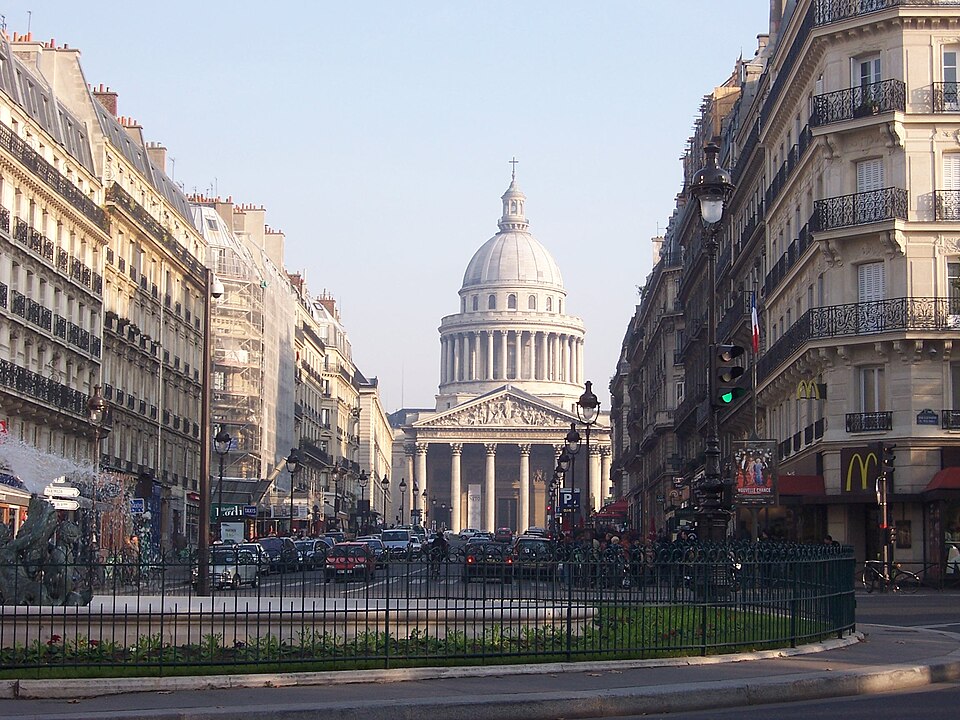
Step outside and you’re in the academic heart of Paris. The Sorbonne is a few minutes away. Rue Mouffetard, one of the city’s oldest streets, lies downhill with its markets and terraces.
Student cafés cluster on Place de la Contrescarpe. Visiting the Panthéon naturally fits a day exploring the Quartier Latin, where Paris’s intellectual life has pulsed for centuries.
7. A Big Site Without the Big Crowds
The Panthéon draws visitors but never swarms. Unlike the Eiffel Tower or Louvre, you can take your time.
In the crypt, inscriptions are easy to read without being jostled. At the dome, the view feels like a privilege, not a fight.
For many travelers, that slower rhythm becomes one of the most memorable parts of the visit.

